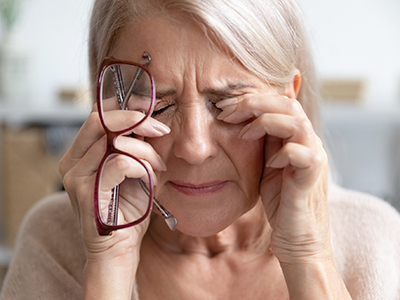
From risk factors and why it’s important to catch it early, Dr. Eduardo Navajas shares information about age-related macular degeneration.
Q: What is age-related macular degeneration?
A: Age-related macular degeneration (AMD) is a disease of the macula, which is the small, central portion of the retina that is responsible for the high definition, straight-ahead vision needed for reading, driving or recognizing faces. AMD does not cause total blindness because the unaffected retina around the macula continues to provide peripheral or side vision. The cause of AMD is unknown but the condition can develop as the eye ages. In fact, it is the most common cause of irreversible vision loss in people aged 50 years and older. There are two types of AMD: non-neovascular or dry AMD; and neovascular or wet AMD.
Q: What is the difference between wet macular degeneration and dry macular degeneration?
A: Dry AMD is characterized by yellow deposits under the macula called drusen. As drusen accumulates it may lead to weakening of the macula and loss of the central vision. Dry AMD develops slowly and in its early stage may cause no symptoms. As the disease progresses, patients may experience difficulty seeing people clearly at a distance, have problems transitioning from dark to bright light, or they may need increasingly brighter light to read.
Wet AMD occurs in patients that already have dry AMD and is characterized by the growth of abnormal blood vessels in the macula. These abnormal blood vessels leak fluid and/or blood. If untreated, the leaking fluids can cause a permanent scar in the macula and irreversible vision loss. Wet AMD develops quickly and can cause blurry or distorted vision.

Q: Do either of these conditions lead to permanent vision loss? Can vision loss be slowed or reversed?
A: Both dry and wet AMD can lead to permanent vision loss. And while there is currently no treatment for dry AMD, the Age-Related Eye Disease Study (AREDS) and the AREDS 2 both showed that a certain combination of nutritional supplements can decrease the risk of developing advanced forms of AMD for some patients. The recommended supplements (AREDS 2) are vitamins C, E, lutein and zeaxanthin, zinc and copper. Eating healthy, getting regular exercise, controlling high blood pressure and quitting smoking have also been shown to help.
The main treatment for wet AMD is the injection of medications called anti-vascular endothelial growth factor (VEGF). A high level of VEGF in the eye is linked to the formation of abnormal blood vessels in wet AMD. Anti-VEGF agents reduce the damaging effects of these abnormal blood vessels and are able to effectively stabilize, and sometimes improve, vision.
Anti-VEGF medications are administered by injecting them directly into the affected eye with a very fine needle. Anti-VEGF treatment is typically administered at regular intervals over time.
Q: Who is at risk for getting AMD?
A: Age is the main risk factor for developing AMD. Other risk factors include smoking, high blood pressure, family history, genetics and a diet rich in saturated fat. AMD is also more prevalent in the Caucasian population than among other ethnic groups.
Q: Why is it important to catch AMD early?
A: Many people don’t realize they have AMD until their vision is very blurry. This is why it is important to have regular visits with an eye doctor. They can look for early signs of AMD before you have any vision problems. Early treatment, especially for wet AMD, can reduce the risk of permanent vision loss.



